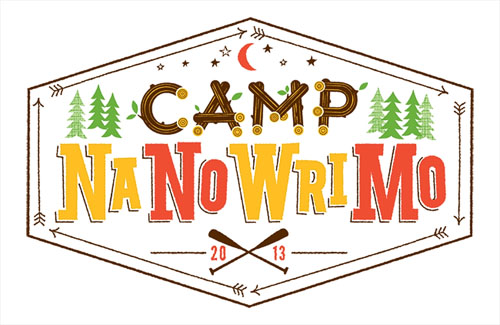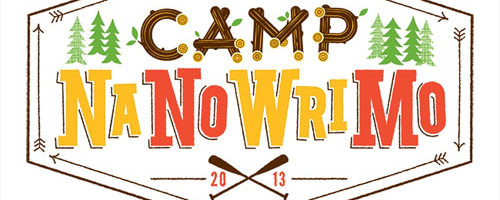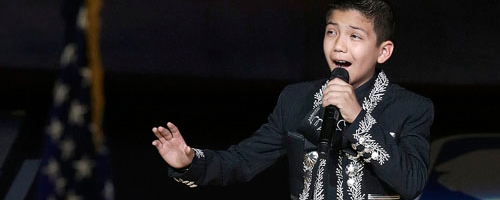I’ll be the first to admit that I’m not one for camping. I don’t see the draw of spending days at a time outside without access to running water or the wonder that is indoor plumbing, getting bitten by a whole host of insects with incredibly scary-sounding Latin names and generally stepping down a few rungs on the progress ladder. It’s just not my cup of tea (except for the s’mores). However, I am going to camp this year for the first time since I was 14; but I’m going from the comfort of my back porch and Adirondack chair.
A novel approach to summer camp

I’ll be the first to admit that I’m not one for camping. I don’t see the draw of spending days at a time outside without access to running water or the wonder that is indoor plumbing, getting bitten by a whole host of insects with incredibly scary-sounding Latin names and generally stepping down a few rungs on the progress ladder. It’s just not my cup of tea (except for the s’mores). However, I am going to camp this year for the first time since I was 14; but I’m going from the comfort of my back porch and Adirondack chair.
NaNoWriMo, short for National Novel Writing Month, began in July 1999 in San Francisco: 21 friends decided that they wanted to see if it was possible to write a novel in a month. So, they collected junk food provisions and sat in the glow of their laptop screens for 30 days, furiously keying one word after another as the novels rolled out before them. On August 1, they looked back at their stories, most of which were aimless, neither terrible nor great. But the process was fun, and thus NaNoWriMo was born.
Now, every Nov. 1, millions sit down at their keyboards to try to crank out a viable 50,000-word novel in 30 days. Some do it because they, like the founders, want to see if they have the endurance, persistence and tenacity to finish. For others, it’s a way to jumpstart the first draft of a book that’s been in the back of their heads forever. Most fail to hit that 50,000-word mark, but few regret trying and there have been several successes. Several New York Times bestsellers were created during NaNoWriMo: Sara Gruen’s Water for Elephants, Erin Morgenstern’s The Night Circus and Hugh Howey’s Wool.
Camp NaNoWriMo, an offshoot of NaNoWriMo, starts July 1 at midnight. Over the course of a month I will write a brand-new, 50,000-word book. I’ve never tried NaNoWriMo before; I decided that attempting to write a novel during November while in school (undergrad or graduate) was not a good idea. The question that most people ask me is why in the world I would voluntary try to write 1,600 words daily for 31 days. I’ve written a manuscript before, and it took me at least a year to hit the 50,000-word mark (the manuscript ended up being nearly 85,000 words). But, like those brave souls before me, I want to see if I can do it. So, this summer, I’ve got enough time available to at least attempt to meet my daily quota. In order to help with the stress, I’ve been planning it out as much as I can in advance, and will do so until June 30 at midnight, when the marathon begins.
So what goes into planning a novel? Everything. I have to figure out who my characters are, what purpose they serve and how will they interact with other characters to ensure the plot makes sense and moves forward at an engaging clip and in a logical fashion. These are all things that go into traditional planning. Usually I let these things occur naturally, and that process can take anywhere from a week to three months. For camp, I’m accelerating that process to less than a month.
The best part is that I have a writer roommate who is also attending camp, so I have a built-in support system. The number-one tip I have for others who want to attend the camp: Find a buddy. If you’re going to make yourself write an entire novel in a month, you’ll need someone to bring you junk food and to reassure you that you do not suck/are not a talentless hack/are not crazy and that everything is going to be OK.
My second piece of advice is to research. Even fantasy and science fiction writers need to research their topics, not only to sound realistic but also to achieve a realism that helps attach the reader to whatever world is being created. George R.R. Martin, the author of the A Song of Fire and Ice series, based most of the series’ feudal system, food and language on the systems in place in Great Britain in the seventh, eight and ninth centuries. For my part, I’ve been burying my nose in Pacific Northwest Native American and Celtic and Irish mythology, violinist jobs and music composition and terminology, Oregon Coast geography and seal and seal lion behavior. Using Lit Lift, an online novel-planning site, I can keep track of all my characters, major and minor, including their appearances, mannerisms, hobbies and occupations. I can also keep notes of the settings I’m using, as well as any major items or tools that will appear in the novel.
My third and last piece of advice is to write. As author Neil Gaiman said, “Write. Put one word after another. Find the right word, put it down.” There’s only so much you can plan and ponder; there comes a time when you need to sit down and write the words out.
Writing is not for everyone. Some people want to spend their summers outside, getting a tan, being social and going camping. But, then again, you could join me in attempting to write a novel in 31 days. I’ll be chronicling my adventures here and via Twitter at Jessica Miller @Coffeejunkie14.
Tips on writing and Camp NaNoWriMo information can be found at:
campnanowrimo.org/en
nanowrimo.org/en
litlift.com
mentalfloss.com/article/50759/11-gaiman-quotes-writing







Good Luck! Can’t wait to read your novel on August 1st!!!!
I’m glad to know that I’m not the only one trying to do this! It’s inspiring to know how dedicated you are to this!